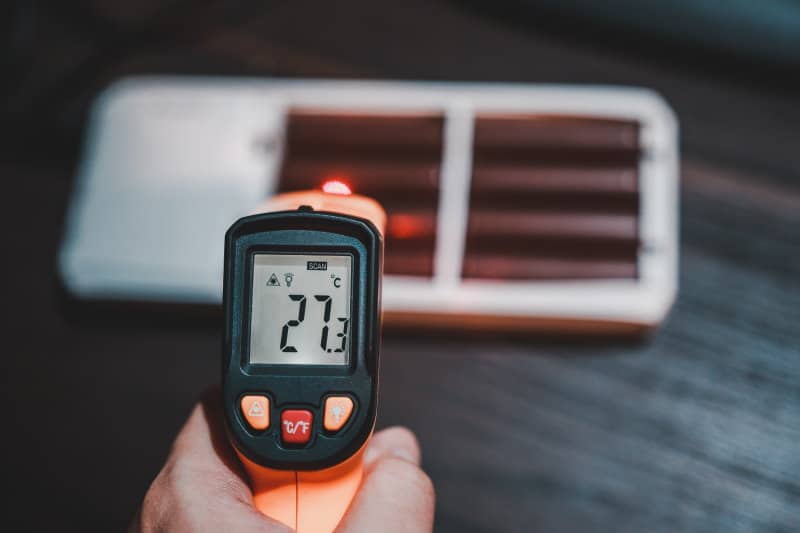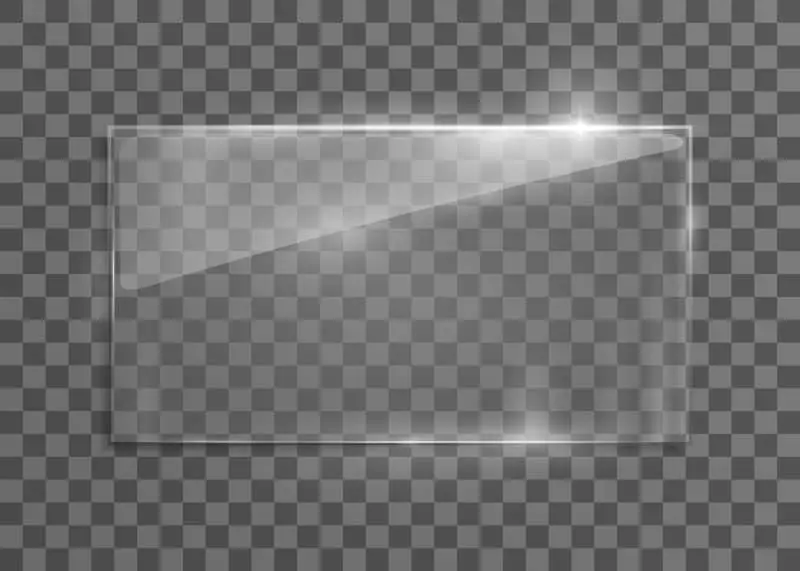Using EMF blocking materials to protect oneself from EMF radiations is one of the proactive methods people have devised. A lot of materials have been identified for their EMF blocking activities. Read on to see how glass fares among these materials.
Yes, electromagnetic field radiations can pass through glass. Electromagnetic field radiation is a spectrum that includes many radiations, including visible lights. However, there are specially made anti-radiation glasses that can block EMF.
There are many ways through which you effectively protect yourself from EMF radiations and its dangers. You will get detailed information on these methods in this article.
How Does EMF Pass through Glass
The electromagnetic field can pass through the glass just the same way light passes through. The electromagnetic field consists of a spectrum of radiations, part of which are visible lights. Thus, as much as lights can make it through a glass, EMFs can pass through glass too.
However, some types of glass can block out EMF radiations. These types of glass are known as X-ray glass, lead glass, or radiation shielding glass. This glass uses two elements, barium and lead, to line the glass.
By the addition of these two elements, the glass can absorb the radiation emanating from any source, thus blocking its advance. As a rule of thumb, the thicker the lead glass, the higher its ability to absorb and block EMF radiations.
This type of glass is also used by radiologists and X-Rays experts to protect themselves from the dangers of X-rays. This goes to show the effectiveness of the leaded glass in blocking EMFs or any form of radiations for that matter. The glass is made in different sizes and shapes and is used in different fields.

Protecting Yourself against EMF
This topic has been a major point of discourse among engineers, health professionals, and people who are aware of the dangers inherent in overexposure to EMFs. Over time, many techniques and approaches have been identified as the effective methods of protecting people from the dangers of overexposure to EMFs.
Under this section, some of these methods will be highlighted, providing information on ways to reduce the dangers of EMF at home and work.
The methods of protecting oneself against EMF include:
1. Understanding the types and mechanism of EMF
People must understand what EMFs are and how they work. This realization and understanding will help provide insights into how to prevent exposure to the radiation.
There are two types of EMF radiations. These are Low-Frequency radiations and Radiofrequency radiation. These two EMF types have different operations and penetration modes. The low-frequency radiation can pass through almost all barriers. No matter how thick or strong the barrier is, the low frequency will still find a way to go through the barrier.
Low-frequency radiations come from electrical appliances in the home. These electrical appliances include microwaves, blenders, television sets, and many more. The frequency of these radiations is given at 50/60 cycles per second, which is very slow, hence the name low-frequency radiations.
The other type of EMF radiation is radiofrequency radiations. This type of frequency emanates from the radio signals from communication devices and gadgets used by people. These include our phones and computers. This type of EMF radiation can be blocked or attenuated with materials of adequate thickness and properties. Materials that are as thick as brick walls and thick metal sheets are capable of blocking or reducing the intensity of this type of EMF radiation.
Understanding these EMF types and their modes of penetration helps you guard against them as much as you can. For instance, you now know that EMFs emanating from communication devices can be blocked by using some materials.
2. Distance weakens EMF effects
The two types of EMF radiation get weaker the farther you move from them. This rule holds for all kinds of EMF, most especially low-frequency EMFs. These types of radiations, due to their low frequency, get weaker easily.
This means that you can protect yourself against low frequencies by moving a bit farther from them when they are in operation. The idea is to move about three feet from the appliances that you are using. At this distance, it is expected that the intensity of the EMF radiation is reduced to a tolerable level.
It is important to state that small electrical appliances also produce EMF radiations. As a matter of fact, these smaller appliances produce more EMFs than large appliances. This means that appliances like a phone charger, battery charger, laptop charger, electric motors, television sets, and other small appliances may be doing more harm than you realize.
So whenever these appliances are in action, do your best to stay about three feet away from them. Do not forget that they can pass through walls easily. Therefore, the presence of a wall doesn’t really count.
Larger electrical appliances also produce EMFs, but the intensity and quantity are not as much as that of the small electrical appliances. This is not to imply that you can stay less than three feet from them. The EMFs from appliances such as microwave ovens, refrigerators, washing machines, and the likes are equally dangerous.
Therefore, as a rule of thumb, stay at least three feet away from any electrical appliance while in action.
3. Shield from EMFs
While distance is an effective method of reducing the effect of EMF radiations, it doesn’t work well for radiofrequency radiations. There are two reasons for this.
- Radiofrequency radiation travel farther than low-frequency radiation due to their high frequency
- Most people move around with devices and gadgets emitting radiofrequency radiations
Due to these two reasons, distancing yourself from radiofrequency EMFs may seem a bit ineffective.
The best way to deal with this type of EMF radiation is to shield against the radiation. The use of certain types of materials to block or attenuate the intensity of the frequency is the best course of action. There are materials made of aluminum foil that can be used to block or attenuate EMFs emanating from these sources.
4. Turn them off when not in use
Whether you are at home or in the office, you put yourself at risk of EMF exposure with all the appliances around you. While you can keep some distance from some appliances, you cannot effect the same measure with others. The best course of action, in this case, is to switch off the appliances and gadgets that are not in use.
Computers, printers, wireless mouses, WIFI routers, and other office equipment should be kept off while not in use. You should remember that radiofrequency radiation emanates from these gadgets and keeping your distance may not really work.
Other appliances that should be kept off when not in use are your mobile phones (especially when you are sleeping), laptop computers, and microwave ovens (emits some forms of radiofrequency radiations). All these gadgets and pieces of equipment emit a type of EMF that cannot be guarded against through distancing, hence the need to switch them off when not in use.
Moreover, you will be saving on electricity and energy bills by switching off most of these appliances when not in use.
5. Try wired appliances and gadgets
This is another way to protect yourself against EMFs, especially radiofrequency radiation. The radiofrequency radiation occurs due to the activities of these gadgets trying to communicate with each other through wireless means. Hence, the use of wired communication systems reduces the emission of radiofrequency radiations.
This means it is advisable to have a wired phone at home and in the office. This will reduce the use of the mobile wireless phone. Also, rather than a wireless modem or WIFI router, how about you try wired Internet connections. These suggestions are equally effective as long as the wires and cables used are tidied.
6. Use an EMF meter

Using an EMF meter to measure the rate and intensity of EMF radiation in different areas of the house is another helpful approach. It is difficult to protect oneself against an invisible threat. However, with the aid of an EMF meter, you can see the intensity and extent of the danger you face with EMF radiations.
This means that whenever you power an appliance or switch on a gadget, you know the amount of danger you expose yourself to. You can also know the amount of EMF produced in different parts of the house or office, thereby allowing you to know the safest place in your space.
Conclusion
Ordinary glass cannot block or prevent the passage of EMFs or any form of radiation. Only special types of glass known as leaded or X-Ray glass are ideal for such action. Through the addition of barium and lead that are used to line the glass, the glass absorbs the EMF radiation that attempts to pass through it, thereby preventing its advance.
Apart from the use of leaded glass, there are other methods of effectively protecting oneself against EMFs. These include understanding that EMF radiations can be categorized into two, namely radiofrequency and low-frequency radiations.
While radiofrequency radiations emanate from communication devices, they travel very far and can be attenuated or blocked with the aid of EMF blocking materials. Low-frequency radiations, on the other hand, do travel far due to low frequency, but cannot be blocked by any barrier, no matter how thick. It is emitted from electrical appliances.


